Photography
Photography an important medium of visual fine arts. Photographic image was first captured on a perceptive medium in 1814. In Greece during Aristotle's lifetime in 400 BC, use of magnifying glass was frequent in observing small objects and to catch fire-focusing sunlight on a particular point. Aristotle himself had created a crescent-shaped reflected image during observation of solar eclipse and in fact that was the fundamental formula, which helped to invent Pinhole Camera. Mo Tee, a contemporary Chinese researcher also explained the features of light in the same way.
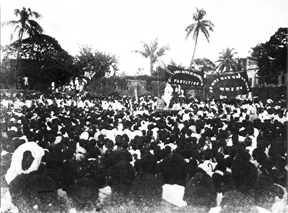
At the outset of second millennium. Ibne-Al Haitam (965-1039 AD), an Iraqi researcher wrote a 7-volume anthology titled Qitab-Al-Manajir while serving an imprisonment in Cairo. In this book he explained the characteristics of light and the geometrical form of rays. In this dissertation he gave a scientific explanation on the characteristics of optic lenses. Moreover, he invented the camera obscure, the first generation of pinhole camera. In Latin, camera obscure means 'dark cell' and this term was first used by Ger-man astronomer Jahannes Keplar in 1604.
The structure of camera obscure is basically like a square shaped box having a very small hole in only one side, through which light can pass inside resulting an inverted image of outside scene reflected on the opposite wall. If the wall is replaced by a semitransparent paper, a negative image of it can be seen on the paper from outside. Later researchers conducted many experiments on camera obscure for the next centuries and at one stage in the 18th century, fixation of a reflector inside the camera yielded a very significant result. Instead of giving an inverted image on the next wall of the whole, it created a positive image of the outside camera obscure scene on the roof of camera obscure. During the post-renaissance period, camera obscure was used mainly by painters as supplementary tools do draw scenery of nature following that reflected image.
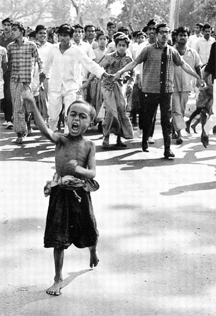
The practice of photography began in British India immediately after its introduction in Europe. Most of the old photos, photographed throughout the 19th century in India were family portraits, landscapes, pictorial documents of cultural activities, official events and architectural objects like monuments and buildings. The first photographic studio `Borne and Shafferd’ was established in Kolkata in 1863. It had branches in other cities of British India. Beyond India Borne and Shafferd had its studios in London and Paris. British Library published an album in which most of the photographs taken from 1850 to 1900 were included.
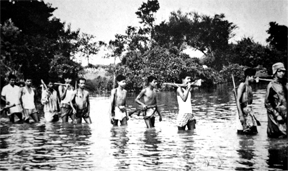
The practice of photography began in Bangladesh almost in the same period as the photographic materials and tools became available in the local market. Golam Kashem Daddy (1894-1998) was the pioneer of photography in Bangladesh. He inspired a large number of people to learn and practice photography in groups. A glass plate negative exposed by him in 1918 was discovered and it is considered as the oldest photographic evidence of the region of Bangladesh. In 1962, he organised the photographers of Bangladesh under the banner of Camera Recreation Club (CRC), the first organisation of its kind. In 1964, an anthology on photography titled 'Camera' was published and edited by him and it was the first book on photography in Bangladesh. Later in 2002, a book Alokechitran' (Easy photography), written by him was published.
Photographs taken by press photographers and other photographers during the war of liberation are regarded as the main war file documents. Photographers who took part in the war of liberation in 1971 include-Rashid Talukdar, Mohammad Alam, Hamid Raihan, Anwar Hossain, Rafiqul Islam, Devid Burnet, Abbas Raghu Rai and Kishore Parekh.
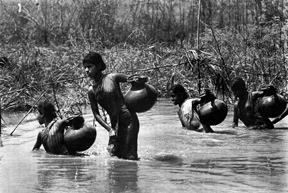
Bangladesh Photographic Society (BPS) emerged in 1976 under the leadership of veteran photographer Manjur Alam Beg. In his effort, BPS also got membership of the International Federation of Photographic Art. It has many front organisations now. He also founded the pioneer photography study centre at the country-Begart Institute of Photography in 1960. Mr. Beg was honoured with the highest award of 'the Excellence for Services rendered FIAP (The International Federation of Photographic Art) for his extra-ordinary contribution in the field of photography study in Bangladesh. The government also honoured him in 2007 with the prestigious Ekushey Padak posthumously. He wrote many books on Photography in Bengali. These include: Photography Formula and Begart Series-1 (1978), Colour Printing and Begart Series-2 (1985), Microfilm-What and Why (1990), Black and White, Colour Photography (1993) and Darkroom Solution (1994).
The first photo agency in Bangladesh, Drik Picture Library, was established in 1989 by photographer Dr. Shahidul Alam and anthropologist Rehnuma Ahmed. Hasan Saifuddin Chandon set up Makin Agency of Photography (MAP) in 1993. MAP Photo Agency emerged as the first agency owned by the photographers of Bangladesh in 1995. In 1998 at the initiative of Drik Picture Library the first-degree level institute for training in photography was set up in Bangladesh as 'Pathshala-South Asian Institute of Photography'. It was renamed as Pathshala South Asian Media Academy in 2010 following the inclusion of multi-media discipline in its curricula.
The first on line news and photo agency of the country 'Bangladesh News 24 Hours Ltd' was launched in 2005. The agency is popularly known as bdnews24.com.
The first Asian Photography Festival was held in the year 2000 in Bangladesh. Since then biennial event is being organised regularly.
Photographes of Bangladesh bagged so far over one hundred first prizes at different international photography competitions. The winners include: Anwar Hossain, Rashidun Nabi, Shuvra, GMB Akash, Manzoor Alam Beg, Mahmud, Shoeb Faruqui, Syed Zakir Hossin, Shahidul Alam, Hasan Saifuddin Chandan, Shafiqul Alam Kiron, Abeer Abdullah, Shehzad Noorani and Manirul Islam.
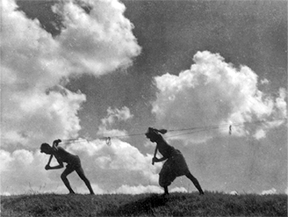
The most remarkable international awards bagged by Anwar Hossain (1948-) include nine prizes from UNESCO (1977-1989), nine Commonwealth awards (1978-1986) and Six US/FIA/prizes. Besides, winning the top international photography awards veteran Bangladesh photographers are also invited to discharge the responsibilities of jury in the competition. Anwar Hossain was the lone jury of the Commonwealth Photo Contest-1980 held in Cyprus. He was one of the judges of crous-French National Photo contest in 1977 and 1999. Shahidul Alam was made a jury of the world's leading press photography competition 'World Press Photo Contest' for 4 Consecutive years. In 2003, he was made the head of jury board of this competition. In the history of world press photo contest his name is recorded as the first non-Euro-American veteran photographer who was made the jury board chief. Moreover, he was awarded the position of Adviser of the National Geographic Society and the Eugine Smith Memorial Fund, one of the most prestigious organisations dealing with documentary photographs. GMB Akash discharged the responsibility of a member of the jury board of the Friends of the Earth Photo Competition, held in the Netherlands for the three consecutive years from 2007. He was a jury of the Worldwide Photography Gala-2009 in UK and the Photo Contest for Food security, organised by the Food and Agriculture Organisation of the United Nations in the following year.
The first book on Photography in Bengali, Adhunik Photography, written by Manzoor Alam Beg was published in 1974 from Kolkata. Several books and albums of Anwar Hossain published so far include: The Bangladesh Image (1980), A Journey Through Bangladesh (1988), Women (1990), Dhaka Potrait (1991), A Voyage Through Bangladesh (2000), A Ballad of Bangladesh (2004), Banglar Prem (2010) and Sonar Bangla (2010). Other remarkable book's on photography are: First Light (1974) by GMB Akash, Everyday is Another Day (2010), Our World-Bangladeshi Women, River Life, Kurigram (20 Villages) and Bangladesh by Mahmud, and Sonargaon, Mosque Architecture of Bangladesh by Syed Zakir Hossain.
Weekly Jaijaidin started publication of photography related articles regularly from 2005 in a column named `camera'. When the weekly turned into a daily in 2006, it allocated a full page under the same banner. This feature page is dedicated for the promotion of photography. News of International Photographic events, and articles helpful for amateur and young photographers are published in this page. The page also publishes technical tips and essays on camera, creativity in photography and profiles of world famous photographers. [Hasan Bipul]
